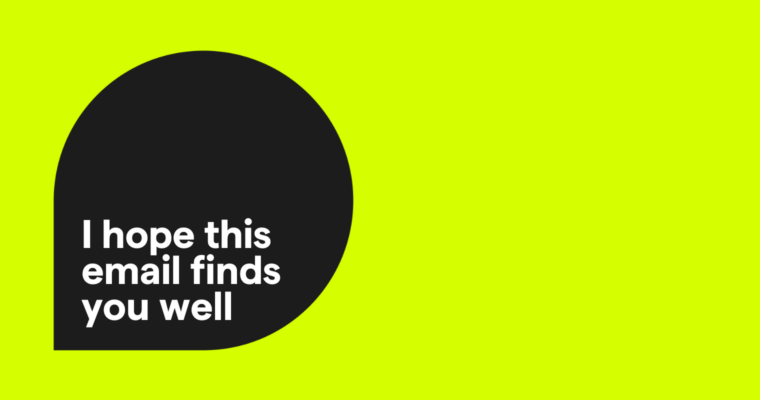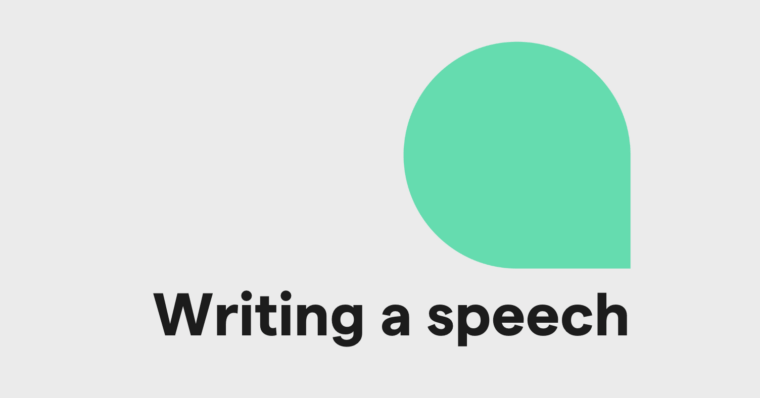
- “I hope this email finds you well” is a formal and polite way of expressing your well-wishes toward the recipient or showing interest in their well-being.
- It’s OK to say, “I hope this email finds you well” as a formal email greeting, but it’s often overused and may come across as inauthentic or old-fashioned.
- A formal email greeting should promote engagement with a strong opening line that reduces the chances of your email going unnoticed.
- Alternatives to saying “I hope this email finds you well” include “I hope you’re doing well,” “I hope you’re having a good week,” “How are you doing?” and “It’s a pleasure connecting with you again.”
You’ve probably opened many emails that start with “I hope this email finds you well.” While appropriate as a formal email greeting in professional settings, this overused phrase doesn’t necessarily captivate recipients from the start or promote interest in the rest of the message.
Here, we’ll discuss the meaning of “I hope this email finds you well” and share 10 better alternatives to make your email more engaging and effective.
Table of contents
“I hope this email finds you well” meaning
Is it OK to say, “I hope this email finds you well”?
Why formal email greetings are important
10 stronger alternatives to “I hope this email finds you well”
“I hope this email finds you well” FAQs
“I hope this email finds you well” meaning
“I hope this email finds you well” is a formal and polite way of expressing your well-wishes toward the recipient or conveying an interest in their well-being. It means, “I hope you’re in good health when you receive this email.”
This email greeting originates from the outdated phrase, “I hope this letter finds you well.” When letters were the primary form of professional communication, they could take days or longer to reach their recipients, whose circumstances may have changed since their last encounter with the sender.
With email now being the most common way to communicate professionally, “I hope this letter finds you well” has mostly been replaced by “I hope this email finds you well.”
Is it OK to say, “I hope this email finds you well”?
There’s nothing wrong with saying, “I hope this email finds you well” as a formal email greeting. However, it’s often overused as an opening line and may inadvertently come across as inauthentic or old-fashioned. Although well-intentioned and inoffensive, this phrase may disengage your recipient from the start.
Other common variations of “I hope this email finds you well” include:
- I hope this finds you well.
- I hope this letter finds you well.
- I hope this message finds you well.
The tone of your email must be genuine, regardless of whether you’re checking in with a co-worker, looking for a status update, making a request, or asking for an immediate response. In short, it’s OK to say, “I hope this email finds you well,” but there are better alternatives to get your recipient’s intention.
Why formal email greetings are important
Email greetings in a formal or professional setting can help create meaningful workplace interactions and positive business connections. An enthusiastic email greeting can promote engagement and reduce the chances of your email going unnoticed.
Before writing an email greeting, make sure your subject line is a clear and concise preview of your email’s content. The subject line can determine whether or not your recipient opens the email, so it should capture your message’s importance and intent.
Once you’re confident in your subject line, craft a captivating greeting that grabs your recipient’s attention. Your introduction should entice them to spend more time with the message and help prevent your email from being ignored.
10 stronger alternatives to “I hope this email finds you well”
While saying “I hope this email finds you well” is an acceptable email greeting, there are more engaging and effective openings to use.
Here are some alternatives to “I hope this email finds you well” that can leave a good first impression and build positive rapport.
1 I hope you’re doing well
“I hope you’re doing well” is a more informal version of “I hope this email finds you well.” It’s a sincere and personal email greeting that can be used professionally and casually.
Instead of “I hope you’re doing well,” you can also say:
- I hope all is well.
- I hope you’re well.
2 I hope you’re having a good week
This email opening helps wish the recipient well in a professional tone and is useful in emails to coworkers or others you’re collaborating with.
Here are some other ways to express the same sentiment:
- I hope your day is going well.
- I hope you had a good weekend.
3 How are you doing?
“How are you doing?” is an expression that English speakers use to ask how another person is feeling or handling a situation. As an email greeting, it’s an appropriate way to acknowledge the recipient before getting to your email’s purpose.
Other ways to ask the recipient how they’re doing include:
- How are you?
- How’s it going?
- How have you been?
4 It’s a pleasure connecting with you again
When used in emails to people you’ve corresponded with or met previously, “It’s a pleasure connecting with you again” is a friendly way to start an email and build on a previous exchange with the recipient.
If you haven’t engaged with the recipient before, you can say:
- It’s great to connect with you.
- I’m glad we got a chance to connect.
5 Congratulations on [accomplishment]
Congratulating your recipient on a recent accomplishment or good news is a positive way to start your email and provide acknowledgment. It’s thoughtful and genuine, and shows you’re keeping up with the recipient’s latest achievements.
- Congrats on [accomplishment].
- Way to go on [accomplishment]!
6 [Mutual contact’s name] said I should reach out
Mentioning a mutual connection at the start of your email is a good way to introduce yourself and establish rapport. A shared acquaintance or relationship can help build common ground between you and the person you’re contacting. Make sure you have the permission of the shared mutual connection before mentioning them, especially if you are making a request.
If you share a mutual connection, you can also say:
- [Mutual contact’s name] mentioned I should reach out to you.
- [Mutual contact’s name] put me in touch with you.
7 It was great seeing you at [event]
If you’ve met the recipient before, it doesn’t hurt to say so. Whether you met in a casual setting or connected briefly at a work event or conference, acknowledging a previous encounter can help establish rapport. Even if the recipient seems unlikely to remember the encounter, the fact that you remember the recipient can help strike a positive tone.
Some other ways to refer to a previous meeting include:
- We met at [event].
- It was great to meet you at [event].
8 I’d love an update on [task or project]
Asking for an update on something specific in your greeting can be a productive way to check in with your coworkers. While direct, the tone is personal and encouraging. You can follow this email greeting by specifying further details on what you’re looking for.
Here are some other ways to ask for an update:
- I’m looking for an update on [task or project].
- Can you give me the latest on [task or project]?
9 Something more personal
If you want your email to seem more personal from the start, tailor your opening to something specific about the recipient. Even in a formal email, it’s appropriate to ask about or acknowledge the recipient’s recent experiences or upcoming plans as a way to build a connection. The more familiar you are with the recipient, the better this approach works, even if you know each other only through email exchanges.
Here are some examples of using a personalized opening:
- How are things in New York? I hope you’re keeping cool during the heat wave.
- I hope your summer’s off to a great start. Is it vacation time yet?
- Hello! I hope you have some fun plans for the weekend.
10 Nothing at all
Some recipients prefer you get straight to the point and keep your email brief. While it doesn’t hurt to include a short greeting like “I hope you’re well,” it’s also acceptable to state the intention of your email immediately, especially if you’re making an urgent request or need a response as soon as possible. Depending on the situation, getting to the point of your email instead of a greeting can signal that you value the recipient’s time.
“I hope this email finds you well” FAQs
What does “I hope this email finds you well” mean?
“I hope this email finds you well” is a polite, formal greeting that expresses well-wishes or an interest in the recipient’s well-being. It’s a modern adaptation of the older phrase “I hope this letter finds you well,” used when letters were the primary form of communication.
Is “I hope this email finds you well” acceptable in professional emails?
Yes, it’s acceptable, but often overused. While polite, it can come across as inauthentic or outdated. There are better alternatives that are more engaging and personal.
What are some better alternatives to “I hope this email finds you well”?
- I hope you’re doing well.
- I hope you’re having a good week.
- How are you doing?
- It’s a pleasure connecting with you again.
- Congratulations on [accomplishment].
Why are formal email greetings important?
A strong email greeting promotes engagement and sets a positive tone, increasing the recipient’s likelihood of reading and responding. It complements a clear, concise subject line that previews the email’s intent.
Should you always include a greeting in emails?
Not necessarily. While email greetings are polite, some situations call for skipping them, such as when urgency is required or brevity is preferred. In these cases, jumping straight to the email’s purpose can signal respect for the recipient’s time.






